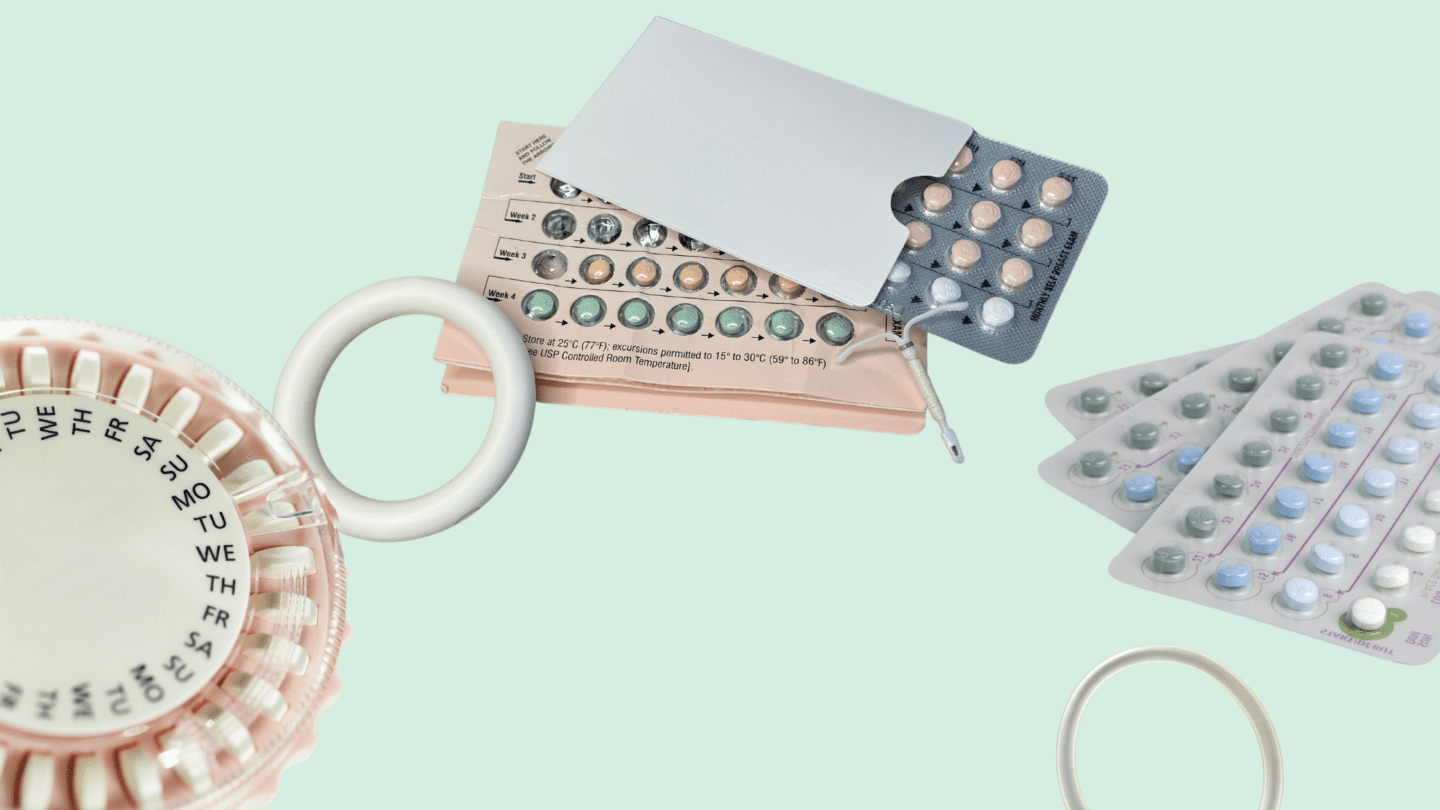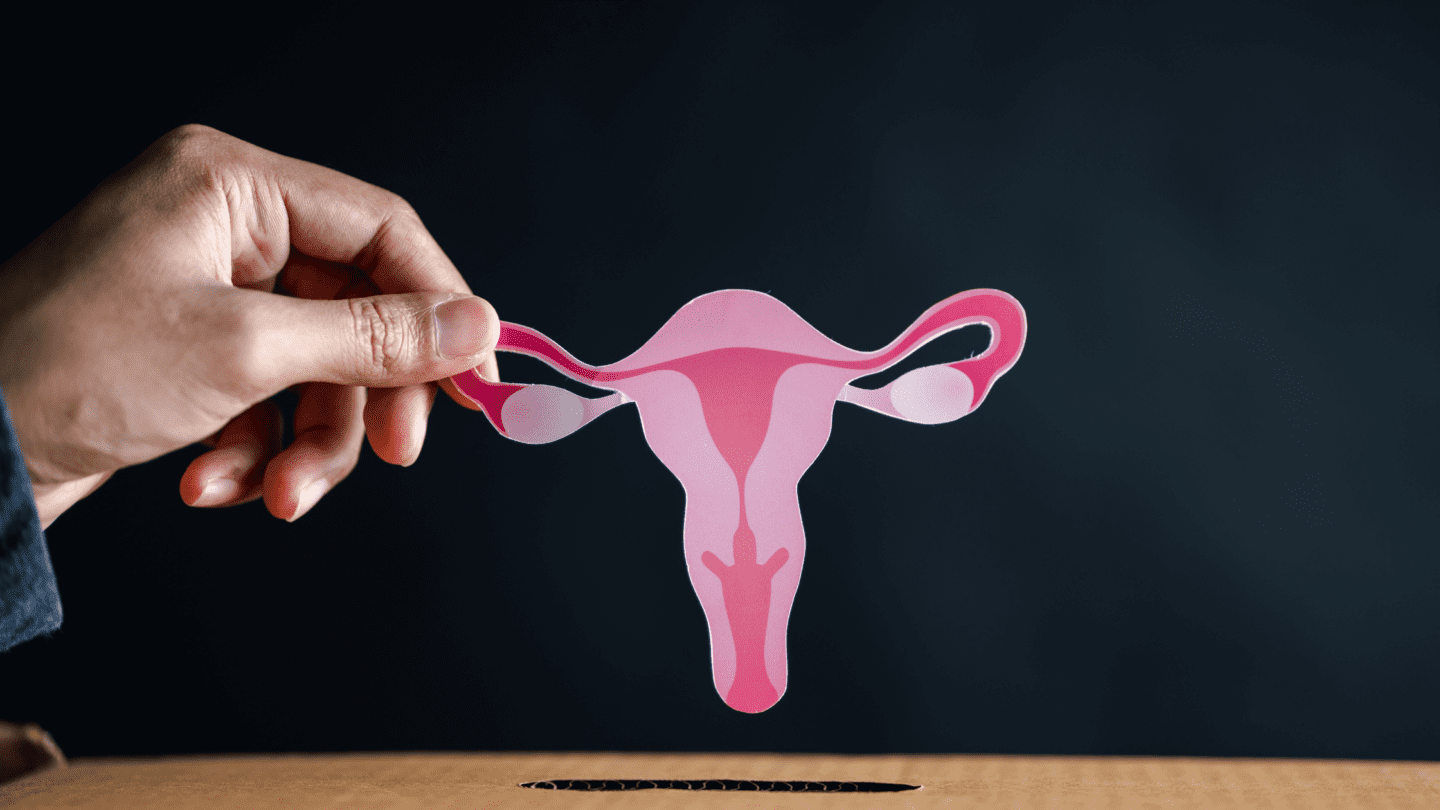Does help with PMDD symptoms?
Premenstrual Dysphoric Disorder (PMDD) is the big, bad sibling of premenstrual syndrome (PMS). Both conditions can cause mood swings, depression, irritability, and more. But people with PMDD have symptoms that are much more severe.
PMDD hasn’t been studied enough for us to know exactly what causes it, nor exactly what to do about it.1 But we know that the fluctuations in hormones that accompany your period play a role in PMDD, and they could also offer a way to treat it. — the pill, the ring, IUDs, and more — helps to regulate the hormonal swings that happen throughout the menstrual cycle. So, it stands to reason they could help with PMDD, too.1
One type of hormonal birth control, called Yaz, has already been approved by the FDA to treat PMDD. It contains a , drospirenone, that helps treat symptoms in people with PMDD, according to studies.
But beyond that, the picture is less clear. Despite decades of research into the matter, studies still disagree on whether helps tackle PMDD symptoms. Like our knowledge of PMDD itself, it’s an area of research filled with distressing gaps.1 For example, it’s still not clear which combinations of hormones are best for treating PMDD, to say nothing of the strong possibility that different people may need different treatments for their unique biology.
Treatments for the condition likely need to be personalized to some degree — tuned to account for each person’s unique genetics and biology. It’s something the medical field as a whole is beginning to wake up to, and advances in genetic sequencing and computing are making personalized treatments more possible than ever. It’s still early days for the field, but it might mean that, paired with a better understanding of the underlying mechanisms of PMDD and more diverse treatments, we could be closer than ever to a real solution for the condition.
What is Premenstrual Dysphoric Disorder?
PMDD is a condition that can cause depression, mood swings, anxiety, changes in appetite, sleep issues, and more around the time of your period. PMDD symptoms are similar to PMS, but much more severe. People with PMDD often experience symptoms that are so bad they can be debilitating.2
PMDD is a condition that can cause depression, mood swings, anxiety, changes in appetite, sleep issues, and more around the time of your period.
PMDD symptoms typically appear a week or less before your period, during the luteal phase of the menstrual cycle following ovulation, peak right around when your period starts, and improve a few days afterward.2 Though it’s been discussed for decades, PMDD has only been an official diagnosis since 2013, when it was added to the Diagnostic and Statistical Manual of Mental Disorders, or the DSM.3
But there are still gaps in even some of the most basic information about PMDD.1 Take, for instance, the question of how many people even have the condition. One 2011 study of Spanish women reported PMDD symptoms in 1.1% of them,4 while a 2002 study of women living in Germany between the ages of 14 and 24 found an of 5.8%, and noted another 18.5% of people were near to the threshold for PMDD.5 One reason for the disparity could be that studies often don’t do a good job of distinguishing between PMS and PMDD, as well as the fact that they use different scales to assess symptoms.
What causes PMDD?
Doctors still aren’t completely sure what causes PMDD. It’s obvious the condition is tied to the menstrual cycle, which is a big clue that sex hormones play a role.1 But fluctuations in , , and other sex hormones happen to everyone who gets a period, though not everyone experiences PMDD.
One explanation is that there may be a genetic component to PMDD.6,7 That would explain why some people are so much more susceptible to severe symptoms than others. But like other aspects of PMDD, research into the genetics behind the condition is still in its very early stages, making it hard to even say what s might be involved, much less what to do about them.
Other research points to two compounds made from inside the body, pregnenolone and allopregnanolone.1 They both affect a neurotransmitter called gamma-aminobutyric acid (GABA), which helps regulate stress, anxiety, and alertness. Research ties both pregnenolone and allopregnanolone to PMDD, and they could be another piece of the puzzle.
Serotonin deficiencies might also contribute to PMDD. For some people, serotonin might drop during the luteal phase, leading to things like depression.8 That theory is borne out by the fact that SSRIs (selective serotonin reuptake inhibitors), which work by temporarily stopping the brain from absorbing serotonin floating around, do often help improve PMDD symptoms.
Like what you’re reading? Get the latest straight to your inbox 💌
Birth control and PMDD
Scientists have been trying for years to find out if, and how, might help to alleviate or prevent the symptoms of PMDD (and PMS, too). While some studies find an improvement in some symptoms of PMDD after people started taking hormonal birth control, others find the opposite — the symptoms got worse.8
One culprit behind the paradoxical results could be the sheer number of different formulations of hormonal birth control, as well as the variety of doses at which they’re given. For example, some studies show that taking continuously, that is, skipping the week, yields better results for people with PMDD.9 Although people have been taking pills for decades, there’s still too little knowledge about how different people will respond to any given formulation. It’s a problem for people trying to deal with PMS or PMDD symptoms, and, really, for anyone taking at all.
Although people have been taking pills for decades, there’s still too little knowledge about how different people will respond to any given formulation.
At the moment, there’s just one type of approved by the FDA to treat PMDD.10 It’s called Yaz, and it comes in the form of a daily pill that contains an and a . You take the hormone-containing pills for 24 days and then a for four days before starting the cycle over again. Yaz is also highly effective when used correctly, meaning it’ll prevent pregnancies just as well as other options.10
The in Yaz is called drospirenone, and a number of studies show it helps alleviate PMDD symptoms.11,12 Drospirenone did a better job than other hormones at reducing PMDD symptoms, and people taking it said they felt more able to carry out daily activities like socializing and being productive.11
Is adyn right for you? Take the quiz.
It’s still not clear why drospirenone works where other s don’t. It might be because it bears more of a resemblance to the our bodies make compared to other s.1 Or it may be because drospirenone, unlike other s, helps block androgenic sex hormones like and aldosterone, which some studies suggest could lead to PMDD symptoms.13 At the risk of sounding like a broken record, more study is needed.
And there are some caveats even with drospirenone. Many studies of it show significant effects, as a 2012 review study points out.14 That means the people in the control group taking dummy pills also saw an improvement in their symptoms. The groups didn’t report an effect that was quite as big as the active groups, but it nevertheless makes it hard to tell exactly how effective drospirenone is.
What to do if you think you might have PMDD
If you’re experiencing things like severe depression, mood swings, anxiety, or issues with sleeping and eating right before your period starts, it’s a good idea to see your doctor. They can help determine whether you might have PMDD, and lay out what to do next.
The first line of treatment for PMDD is often SSRIs.
The first line of treatment for PMDD is often SSRIs. They can help with psychological symptoms like depression, and can stabilize your mood. They can be taken throughout the month,15 or some doctors might recommend taking SSRIs just when you feel symptoms around the time of your period every month. SSRIs come with their own side effects, though, and not everyone’s comfortable taking them.
Hormonal could be another way to tame PMDD symptoms. Yaz works like any other hormonal birth control, and there’s some evidence it can help with PMDD, too.
On top of it all, remember that many people experience uncomfortable, disruptive, and sometimes even frightening symptoms tied to their periods. But with the right regimen of care and support, PMDD is possible to overcome.
-
- Lete, Iñaki, and Oihane Lapuente. “Contraceptive options for women with premenstrual dysphoric disorder: current insights and a narrative review.” Open Access Journal of Contraception 7 (2016): 117.
- Reid, Robert L. “Premenstrual dysphoric disorder (formerly premenstrual syndrome).” Endotext [Internet] (2017).
- Epperson, C. Neill, et al. “Premenstrual dysphoric disorder: evidence for a new category for DSM-5.” American Journal of Psychiatry 169.5 (2012): 465-475.
- Dueñas, José Luis, et al. “Prevalence of premenstrual syndrome and premenstrual dysphoric disorder in a representative cohort of Spanish women of fertile age.” European Journal of Obstetrics & Gynecology and Reproductive Biology 156.1 (2011): 72-77.
- Wittchen, H-U., et al. “Prevalence, incidence and stability of premenstrual dysphoric disorder in the community.” Psychological medicine 32.1 (2002): 119-132.
- Huo, Liang, et al. “Risk for premenstrual dysphoric disorder is associated with genetic variation in ESR1, the estrogen receptor alpha gene.” Biological Psychiatry 62.8 (2007): 925-933.
- McEvoy, Katherine, et al. “Reproductive affective disorders: a review of the genetic evidence for premenstrual dysphoric disorder and postpartum depression.” Current Psychiatry Reports 19.12 (2017): 1-12.
- Nevatte, Tracy, et al. “ISPMD consensus on the management of premenstrual disorders.” Archives of Women’s Mental Health 16.4 (2013): 279-291.
- Halbreich, Uriel, et al. “Continuous oral levonorgestrel/ethinyl estradiol for treating premenstrual dysphoric disorder.” Contraception 85.1 (2012): 19-27.
- FDA. “Highlights of Prescribing Information: Yaz.” (April 2021).
- Wichianpitaya, Jirath, and Surasak Taneepanichskul. “A comparative efficacy of low-dose combined oral contraceptives containing desogestrel and drospirenone in premenstrual symptoms.” Obstetrics and Gynecology International 2013 (2013).
- Pearlstein, Teri B., et al. “Treatment of premenstrual dysphoric disorder with a new drospirenone-containing oral contraceptive formulation.” Contraception 72.6 (2005): 414-421.
- Altemus, Margaret. “Hormone-specific psychiatric disorders: do they exist?” Archives of Women’s Mental Health 13.1 (2010): 25-26.
- Lopez, Laureen M., Adrian A. Kaptein, and Frans M. Helmerhorst. “Oral contraceptives containing drospirenone for premenstrual syndrome.” Cochrane Database of Systematic Reviews 2 (2012).
- Yonkers, Kimberly A., et al. “Symptom-onset dosing of sertraline for the treatment of premenstrual dysphoric disorder: a randomized clinical trial.” JAMA Psychiatry 72.10 (2015): 1037-1044.








